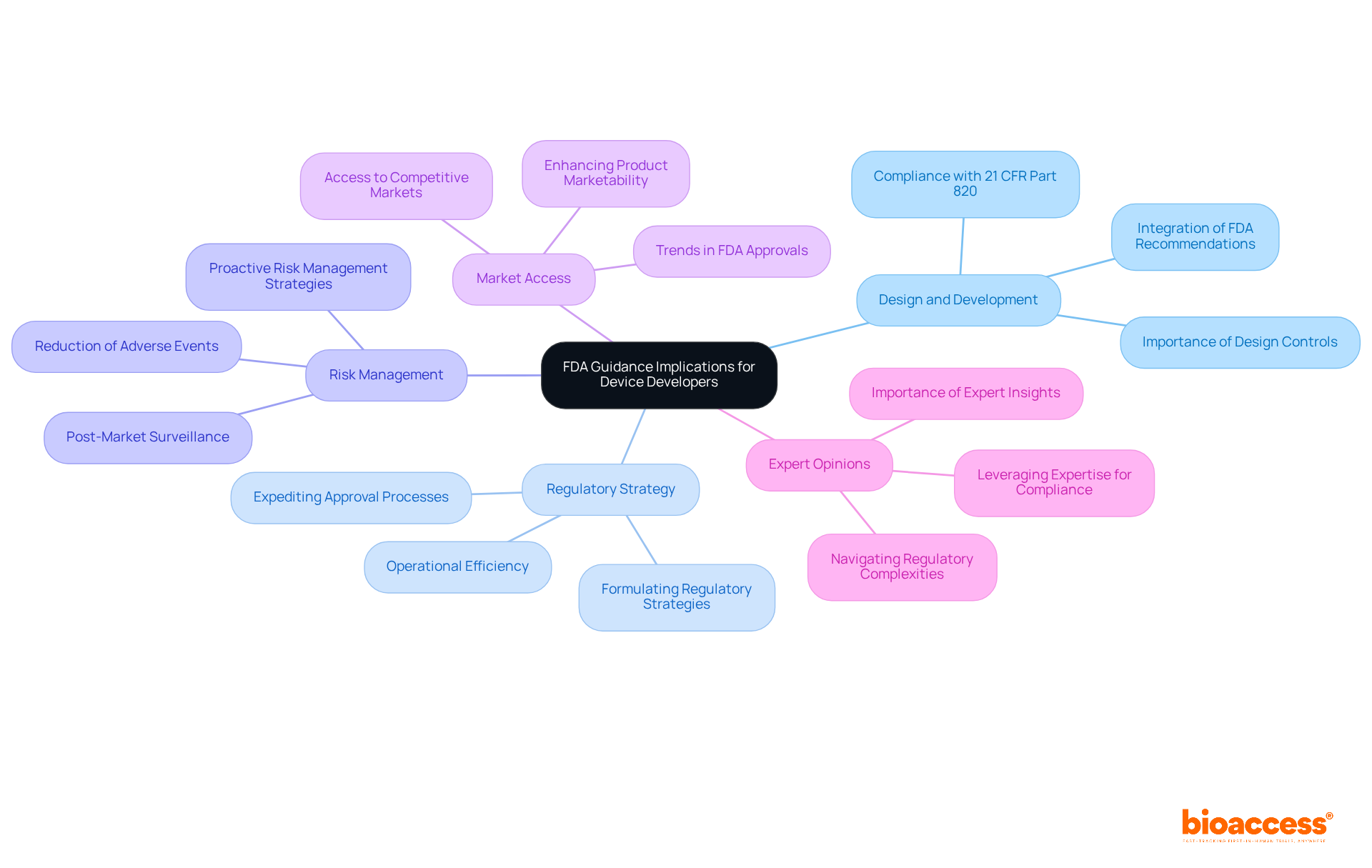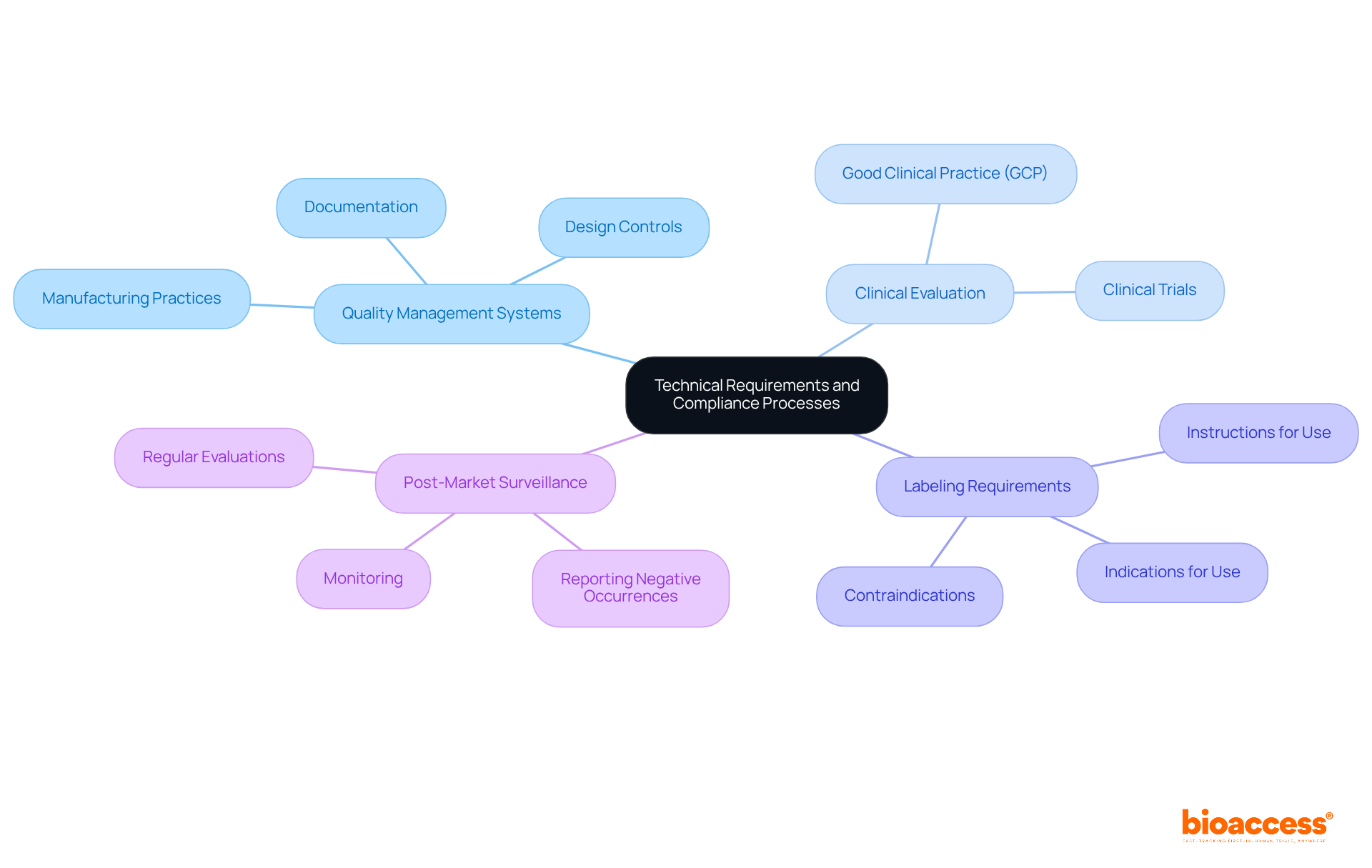


Navigating the complex landscape of medical device regulation is essential for researchers and developers. The FDA's guidance framework is shaping the future of healthcare technology, and understanding its nuances is crucial for successful product development and market entry. As the regulatory environment evolves—particularly with the rise of artificial intelligence and cybersecurity measures—questions emerge about how to align innovation with compliance effectively. What strategies can be employed to meet regulatory standards while seizing emerging opportunities in this rapidly growing industry?
In this context, it’s vital to recognize the importance of collaboration and strategic planning. The Medtech landscape is filled with challenges, but with the right insights and approaches, stakeholders can navigate these complexities. By leveraging data and research findings, we can address key challenges and foster innovation that complies with regulatory requirements. This article will explore the critical role of bioaccess in this process, emphasizing the need for a proactive stance in clinical research.
Ultimately, the path forward lies in understanding the interplay between regulation and innovation. As we delve deeper into this topic, we will outline actionable steps that can help researchers and developers thrive in a dynamic regulatory environment.
The framework of FDA guidance on medical devices includes a comprehensive set of documents that outline the agency's policies and interpretations regarding regulation. Understanding this framework is crucial for anyone involved in clinical research and the development of medical technologies.
Classification of Devices: Medical devices are categorized into three classes (Class I, II, and III) based on their risk levels, with each class subject to specific regulatory controls. This classification is essential, as it dictates the regulatory pathway a product must follow. In Colombia, INVIMA (Instituto Nacional de Vigilancia de Medicamentos y Alimentos) plays a similar role, overseeing the categorization and regulation of medical equipment to ensure compliance with health standards.
Premarket Submission Types: Familiarity with the various submission pathways is vital. The 510(k) pathway allows items that are significantly comparable to existing products to gain approval, typically within 90 days. Conversely, the Premarket Approval (PMA) procedure is designated for high-risk instruments and can take up to 180 days. INVIMA also has its own submission procedures that align with international standards, ensuring that medical equipment meets safety and efficacy requirements before entering the market.
The FDA regularly issues guidance documents that encompass FDA guidance on medical devices, providing recommendations on various aspects of product development, including design, manufacturing, and post-market surveillance. These documents are crucial for ensuring compliance with regulatory standards and facilitating smoother approval processes. Similarly, INVIMA offers directives that assist manufacturers in navigating the regulatory landscape in Colombia, particularly for healthcare products and in vitro diagnostics.
Recent Updates: Staying informed about recent guidance updates is essential, especially those related to cybersecurity and the integration of artificial intelligence in healthcare instruments. These updates reflect the evolving landscape of healthcare technology and the FDA's commitment to ensuring safety and efficacy in an increasingly digital environment. Recognized as a Level 4 health authority by PAHO/WHO, INVIMA also adapts its regulations to respond to emerging technologies and trends in the healthcare equipment sector.
In 2025, the healthcare device industry is projected to reach a global market size of approximately $678.88 billion, growing at a compound annual growth rate (CAGR) of 6%. This growth underscores the importance of understanding the FDA guidance on medical devices, as it is pivotal for the successful commercialization of innovative health technologies. Case studies illustrate that companies effectively managing classification and submission processes can significantly reduce time-to-market and enhance product safety.

The implications of the FDA guidance on medical devices for device developers are multifaceted and can significantly influence the development and commercialization of medical devices.
Design and Development: Developers must integrate FDA recommendations into their design processes to ensure that devices meet safety and efficacy standards from the outset. Compliance with 21 CFR Part 820, which details essential requirements for design controls, manufacturing methods, and post-market activities, is crucial for guaranteeing product safety and effectiveness.
Regulatory Strategy: Understanding FDA guidance on medical devices is vital for formulating a regulatory strategy that aligns with agency expectations, potentially expediting the approval process. Companies that navigate FDA regulations often report enhanced operational efficiency and reduced time to market, which is essential in a competitive landscape.
A proactive strategy for risk management is promoted, incorporating FDA guidance on medical devices along with post-market surveillance and equipment performance monitoring. Organizations that effectively incorporate risk management into their design controls have reported a decrease in adverse events and improved compliance with regulatory requirements.
Market Access: Adherence to FDA guidance on medical devices can enhance a product's marketability, assuring stakeholders of its safety and effectiveness. This compliance enables easier access to competitive markets, as demonstrated by the substantial rise in FDA approvals for AI-enabled health technologies, which increased from an average of 7 approvals per year between 1995 and 2015 to 139 approvals in 2022. This trend underscores the importance of aligning product development with FDA expectations to capitalize on market opportunities.
Expert Opinions: Industry specialists emphasize the importance of integrating FDA recommendations into product design. Shari Esfahani, a Senior Counsel specializing in FDA regulatory matters, notes that understanding complex scientific and technological requirements is crucial for compliance and successful market entry. By leveraging expert insights and adhering to the FDA guidance on medical devices, developers can navigate the regulatory landscape more effectively, ensuring their products meet the necessary standards for safety and efficacy.

Technical requirements and compliance processes for medical devices are rigorous and must be meticulously followed to ensure safety and efficacy:

The regulatory environment for healthcare products is constantly evolving, significantly influencing clinical research methods and compliance strategies. Emerging regulations, especially those centered on artificial intelligence and cybersecurity, require researchers to adjust their approaches to align with new standards. For example, the FDA guidance on medical devices has recently emphasized cybersecurity, leading to stricter requirements for manufacturers and compelling them to integrate robust security measures from the outset.
Another critical aspect for researchers to consider is the accelerated approval pathways. By understanding the implications of these expedited methods, researchers can design studies that meet regulatory expectations, potentially shortening the time to market. Statistics indicate that the validation process for low-risk items can take as little as 10 days, while high-risk items may require a more thorough evaluation period of 45 to 65 days, not accounting for delays from inquiries.
Global considerations are crucial, as regulatory requirements vary across regions. Researchers conducting studies in multiple countries must navigate these differing guidelines and their interactions with the FDA guidance on medical devices. For instance, the European Medical Devices Regulation (EU MDR) outlines specific pathways for medical device clinical trials, which can significantly influence study design and submission planning.
Engaging with regulatory bodies early in the research phase is vital for gaining insights that can facilitate smoother interactions throughout the study lifecycle. This proactive approach not only aids in understanding compliance requirements but also encourages collaboration, ultimately improving the efficiency of the clinical research process.

Understanding the complexities of FDA guidance on medical devices is vital for researchers and developers in the healthcare technology sector. This comprehensive framework not only outlines the regulatory pathways for medical device classification and approval but also plays a crucial role in ensuring the safety and efficacy of innovative health technologies. Mastering these guidelines is essential for navigating the intricacies of product development and commercialization.
The article highlights key aspects of FDA guidance, including:
It underscores the importance of:
Furthermore, the insights provided emphasize the significance of integrating expert recommendations into the design and development processes to enhance operational efficiency and expedite market access.
As the healthcare device industry continues to grow, with projections indicating substantial expansion in the coming years, the importance of mastering FDA guidance cannot be overstated. Engaging proactively with these regulations positions developers for success and fosters innovation in medical technology. By prioritizing compliance and remaining informed about evolving standards, stakeholders can contribute to a safer and more effective healthcare landscape, ultimately improving patient outcomes and advancing the industry as a whole.
What is the purpose of the FDA guidance framework for medical devices?
The FDA guidance framework outlines the agency's policies and interpretations regarding the regulation of medical devices, which is crucial for individuals involved in clinical research and medical technology development.
How are medical devices classified by the FDA?
Medical devices are classified into three classes (Class I, II, and III) based on their risk levels, with each class subject to specific regulatory controls that dictate the regulatory pathway a product must follow.
What is the role of INVIMA in Colombia regarding medical devices?
INVIMA (Instituto Nacional de Vigilancia de Medicamentos y Alimentos) oversees the categorization and regulation of medical equipment in Colombia, ensuring compliance with health standards similar to the FDA's role in the United States.
What are the main types of premarket submissions for medical devices?
The main types of premarket submissions are the 510(k) pathway, which allows for approval of products significantly comparable to existing ones within about 90 days, and the Premarket Approval (PMA) procedure, designated for high-risk devices, which can take up to 180 days.
How does the FDA assist with product development and compliance?
The FDA issues guidance documents that provide recommendations on various aspects of product development, including design, manufacturing, and post-market surveillance, which help ensure compliance with regulatory standards.
What recent updates are important in the context of FDA guidance?
Recent updates include those related to cybersecurity and the integration of artificial intelligence in healthcare instruments, reflecting the evolving landscape of healthcare technology and the FDA's commitment to safety and efficacy.
What is the projected growth of the healthcare device industry by 2025?
The healthcare device industry is projected to reach a global market size of approximately $678.88 billion by 2025, growing at a compound annual growth rate (CAGR) of 6%.
Why is understanding FDA guidance important for the commercialization of health technologies?
Understanding FDA guidance is pivotal for the successful commercialization of innovative health technologies, as it helps companies effectively manage classification and submission processes, potentially reducing time-to-market and enhancing product safety.